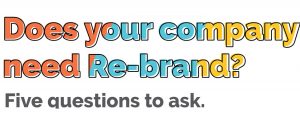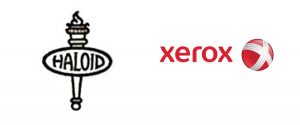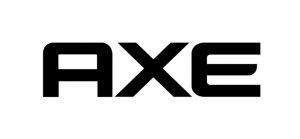Five questions to ask.

Having a strong, consistent brand identity is essential in the modern market. A well-defined brand identity can deliver confidence to uncertain customers, lure them away from competitors, as well as strengthen existing relations, just as well as an ill-defined brand identity that can turn away potential customers and lose existing ones. A brand identity did not matter as much as it does now even as little as a decade ago. The advent of widespread internet and social media has irreversibly changed the playing field. Brand presentation is everything: The face of your brand matters the most for client acquisition and maintenance.
But Brands too, like people, change. Brands evolve. Brands do different things – differently. Brands explore new markets, and with enough intervening time, what the brand does, and what it’s identity says can become two different things – which is a premonition to disaster, and yet such a situation is inevitable in a world which rewards fast evolution.
Brands that fail to evolve with time risk falling behind into insignificance, or worse: Obscurity. Brands that have managed to embrace change as National Geographic did remain as successful as ever, if not more, but the brands who failed such an evolution when the time called for it, are either long gone, or completely forgotten such as Kodak and Nokia respectively.
But when is it the right time for a brand to reinvent or rebrand itself?
That is the question this article aims to address. It doesn’t have to be as late as when it starts falling behind its competition. In fact, if appropriately timed and done well, a rebrand can greatly boost a brand past its current standing.
In order to answer this question appropriately, after hours of research, backed by concrete, real-world examples as case studies, we have isolated five essential, independent questions every brand should ask itself every so often, so the right time for a rebrand doesn’t go by unnoticed.

1. Have your products or services significantly changed?
Xerox was known as The Haloid Photographic Company, and it originally dealt with photo paper and photography equipment, but once it had developed the Xerox Photocopier Lineup which quickly became it’s most profitable, the company swiftly changed its name to Xerox, which was a wise decision as the focus of the whole brand had changed, and Xerox had automatically become the most recognizable name.

2. Has your target audience changed?
Axe Perfumes’ target audience had unintentionally become very slim: Teenagers. That was due to their over-the-top ads depicting the application of perfume acting as a strong aphrodisiac, literally attracting hordes of women to chase the nerdy male hero.
Since then their brand outlook and personality have evolved to a more natural, positive, accepting personality meant to attract a larger crowd that also includes men in their 20s.

3. Has your brand kept up with modern design trends?
Brands have continually needed to evolve their look according to design trends.
Brand Logos are especially important. There was a time when there were no real restrictions on brands’ logos until smartphones came around and suddenly they had to be small and simple yet recognizable. And the smartphone logos themselves have come a long way as well, shaping brands with time, starting with a more 3D sort of look and feel, to a flatter, colorful theme now.
Brands that fall out of design trends suddenly start looking not just unattractive but also out of place.
The type of logo a brand has determined how, and in how many innovative ways it can brandish it on its products.
Previously very complex, difficult to read, and severely brandish-challenged, F1 recently rebranded their 30 years old logo to a modern new style that is incredibly simple, recognizable, as well as perfect, due to its shape, for placement on Champagne Bottles, helmets, and F1 Cars, among other things.

4. Do you need your brand perception to change?
When IHOP or International House of Pancakes, an American brand best known for its pancakes noticed that it’s brand new Burger Lineup was failing to garner enough attention because it was continually eclipsed by the brand perception that the only best thing to eat at IHOP (because it’s in the name) were its pancakes, it decided to make the ingenious move to temporarily change its name to IHOB: International House of Burgers!
The strange, surprising announcement that came completely out of the blue took the media and the financial world by storm. This rebranding strategy has done remarkably well for them with better yearly returns and a higher stock price than before, and people are actually trying and enjoying their burgers!

5. Does your brand need a boost?
Our previous example of IHOP is also a great example for this point, but there is also another example: One fine day in 2015, Spotify users were stunned to find that a mundane little update had suddenly changed the icon color of their Spotify app to a different shade of green, and the internet lost its mind over it.
People took to Twitter, and wherever else they could go to vent about how they hated the new color, and how the change was completely unwarranted. The smallest of things had suddenly and unexpectedly become a hot topic.
Spotify, in this instance, may not have made this change with anything other than a more consistent brand-image in mind, but it certainly triggered a reaction of an unprecedented size: a proof that simple changes meant to rebrand can give your brand a strong boost.
In conclusion, re-branding, besides harmonizing and updating your brand image, can also be an incredibly strong marketing tool that, when wielded with accuracy and timing, has the potential to provoke dazzling results.



